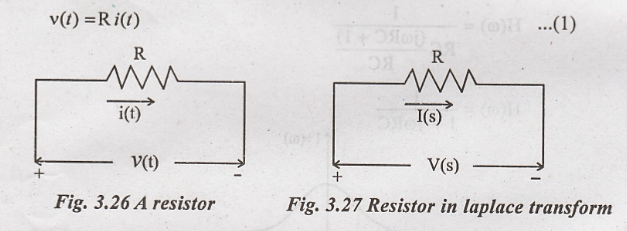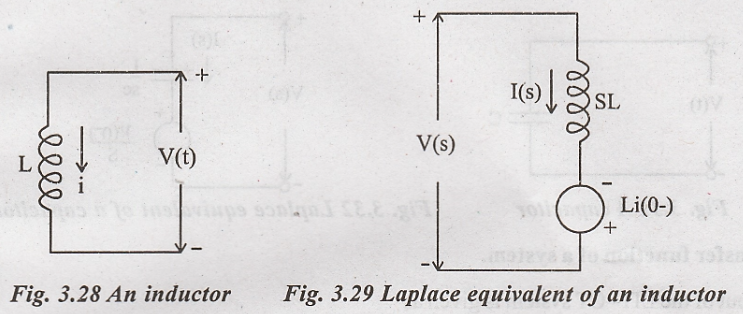Signals and Systems: Unit III: Linear Time Invariant Continuous Time Systems,,
Laplace Transform Analysis of CT System
Solution of differential equation,
3.7 LAPLACE TRANSFORM ANALYSIS OF CT SYSTEM
Solution of differential equation:
The unilateral Laplace
transforms used to solve differential equation with initial conditions.

Laplace transform for
network analysis, Laplace transform is mainly used to analyze the network
effectively. Electrical components such as resistor, capacitor and inductors
are represented by means of Laplace transform.
Laplace Transform of a Capacitor,
Voltage drop across the
resistance is given by,

Laplace transform of
(1) can be written as,
V(s) = RI(s)
Laplace transform of a single inductor
Voltage across the
inductor is given as,

Taking Laplace
transform of above equation.


From equation (2) we
have the current I(t) as

Based on (3) a new
equivalent circuit can be drawn as follows.

Laplace transform of a single capacitor
Voltage across a
capacitor is given as

Taking Laplace
transform of (1)

Based on (2) Laplace
transform equivalent circuit is drawn.

Transfer function of a system.
Output of the LTI-CT
system is given as
y(t) = h(t) * x(t)
Taking Laplace
transform of above equation,

Here H(s) ⇒ system transfer
function.
Impulse response of the
system is obtained by taking inverse Laplace transform, of H(s).
Causality and stability.
Causality:
If the impulse response
h(t) of the system is right sided then it is known as causal system.

A Linear time invariant
system (LTI) is said to be causal if all the poles of its system function lie
on left side of the ROC.
Stability:
A system is said to be
stable, if its impulse response is absolutely integral. i.e.,

A linear time invariant
system (LTI) system is said to be stable if ROC of its system function includes
Re(s) = 0, i.e., jω axis of a plane,
Signals and Systems: Unit III: Linear Time Invariant Continuous Time Systems,, : Tag: : - Laplace Transform Analysis of CT System
Related Topics
Related Subjects
Signals and Systems
EC3354 - 3rd Semester - ECE Dept - 2021 Regulation | 3rd Semester ECE Dept 2021 Regulation
